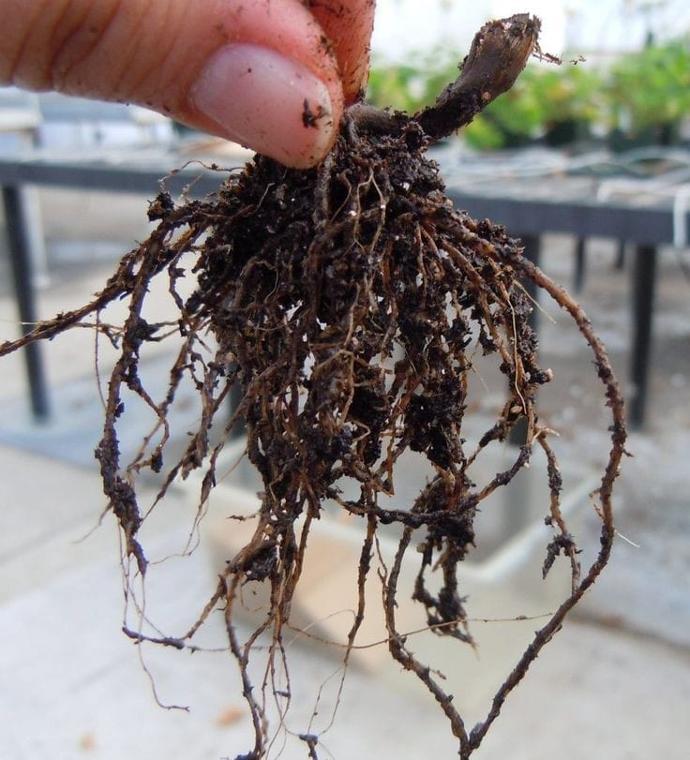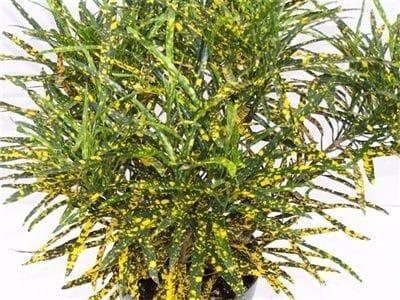Narrow leaf Croton Plant
Narrow Leaf Croton, also known as Codiaeum variegatum, is an outdoor shrub with colorful narrow leaves. Plant in well-draining soil with full sun exposure. Water consistently and prune to shape the shrub. Fertilize during the growing season for vibrant and healthy foliage
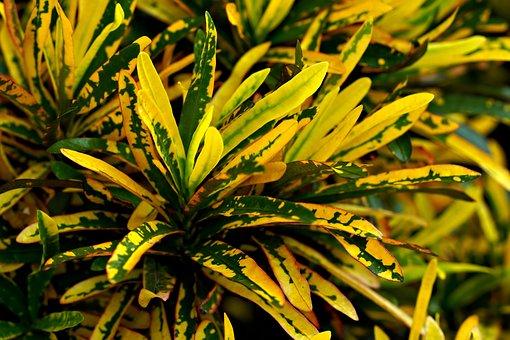
Habit
Shrub
Height
1-2 m
Growth
Fast
Soil
Well Drained, loamy
Shade
Full Sun
Moisture
Moist
Edible
No
Medicinal
No
Origin
Southeast Asia
Climatic Condition
Tropical, Subtropical
Temperature (°)
20-30°C
Humidity (%)
70-80%
Potting media
Loamy, peat
Fertilizers
Balanced NPK (10-10-10)
Watering
Regular, moderate
Plant Weight
300-500 g
Flowering Time
Summer, Fall
Soil Ph level
6.0 - 7.5
Water Ph level
6.0 - 7.5
Soil EC
1-2 dS/m
Yield Per Plant
Ornamental shrub
NPK ratio
10:10:10
life Span
Perennial
Health Benefits
Ornamental leaves, air purifier
Suggested Grow Media or Potting Mix ?
40% peat moss, 30% perlite, 30% compost
Suggested Fertigation/Fertilizers
Fertilize every 2 weeks with a balanced, water-soluble fertilizer.
Common Diseases and Remedies
Damping- off, Pythium spp.
Turns green-grey to brown, Rapid brown to black rot f the entire root.
To sterilize, Bordeaux mixture.
HEALTH BENEFITS
⚠️ Toxicity Warning: Like other Croton plants, it is toxic if ingested but has traditional medicinal uses in controlled doses.
What Is An Narrow-Leaf Croton?
Narrow-Leaf Croton (Codiaeum variegatum) is a tropical plant known for its brightly colored leaves. Its long, narrow leaves come in a variety of bright colors and patterns, making it popular for ornamental gardens and interior decoration. It requires warm temperatures, bright indirect light, and constant humidity to grow. Narrow-leaved croton, scientifically known as Codiaeum variegatum 'Punctatum', is a popular ornamental plant prized for its colorful leaves. It is characterized by long, narrow leaves with a variety of patterns and hues, including green, red, orange, yellow, and purple. This plant is often used in landscapes and indoor environments to liven up gardens, patios, and indoor spaces.
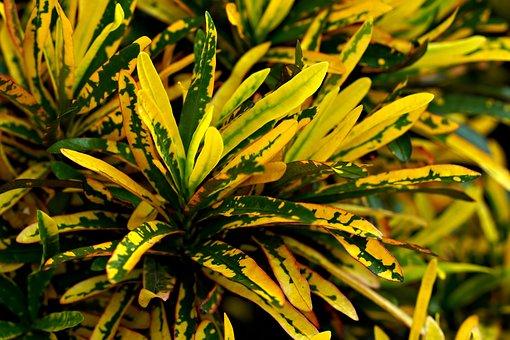
What Are The Different Types Of Narrow-Leafed Croton?
1. Petra
Known for its narrow, elongated leaves in shades of bright red, orange and yellow.
2. Norma
Characterized by narrow leaves that are primarily green, often with subtle yellow or orange accents
3. Gold Dust
Narrow leaves with bright yellow spots.
4. Mrs. Iston
Characterized by narrow, twisted leaves with yellow and green variegation.
5. Zanzibar
Characterized by narrow, pointed leaves in a mix of green, yellow and red hues.
6. Gold Star
Identified by narrow leaves with golden yellow centers and green edges.
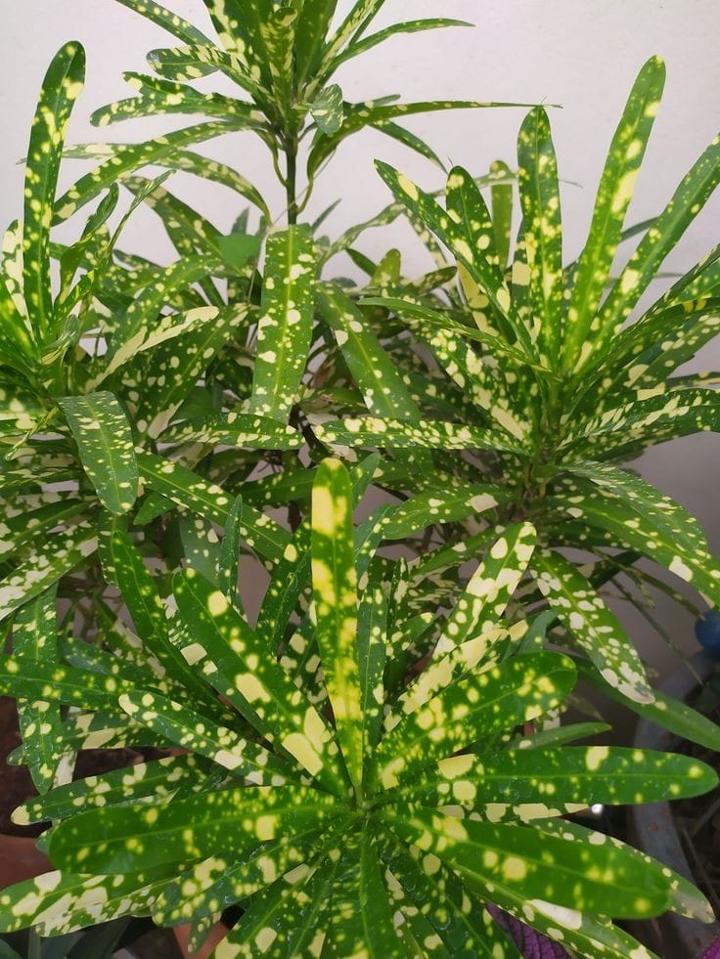
How To Care For Narrow-Leafed Croton?
1. Location
Narrowleaf Croton grows in warm, tropical climates with well-drained soil and plenty of sunlight. It can be grown outdoors in USDA hardiness zones 10 through 11, or indoors in pots with bright, indirect light. Be sure to protect it from cold winds and temperatures below 10°C.
2. Sunshine
Narrow-Leaf Croton grows in bright, indirect sunlight. Place the plant near a window where it receives plenty of light throughout the day. However, avoid direct sunlight as it may cause leaf burn. Always keep an eye on your plant and adjust its position if you notice signs of sunburn or if it's not getting enough light.
3. Soil
Narrow-Leaf Croton prefers well-drained soil that contains organic matter. To improve drainage, mix potting soil with perlite or sand. Make sure the soil is slightly acidic to neutral (pH 6.0 to 7.0) and keep it evenly moist without becoming soggy.
4. Hydration
Proper hydration of narrow-leafed crotons involves keeping the soil evenly moist but not soggy. Water when the soil surface is dry to ensure good drainage to prevent root rot. These plants prefer slightly higher humidity, so mist the leaves from time to time to increase humidity. Please be careful not to overwater as this may cause root rot.
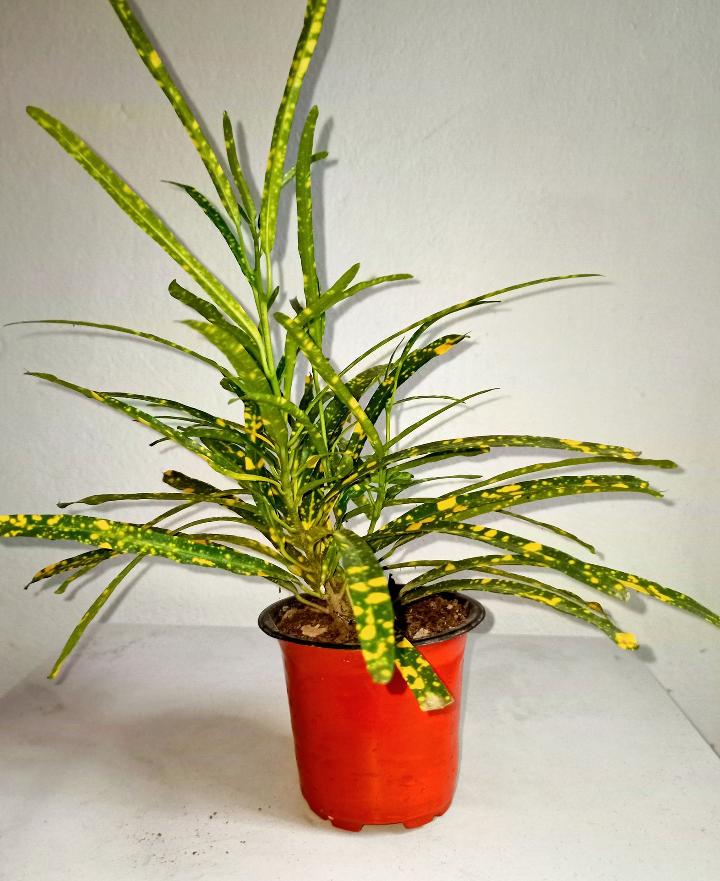
5. Nourishment
Narrowleaf Croton grows in well-drained soil and bright, indirect light. For feeding, you can use a balanced liquid fertilizer diluted to half strength every 2-4 weeks during the growing season (spring and summer). Be careful not to over-fertilize as this will cause salt to accumulate in the soil. Additionally, water regularly to keep the soil evenly moist to avoid waterlogging, and mist occasionally to increase humidity, especially in dry environments.
6. Issues
Crotons are sensitive to overwatering. When a plant's leaves wilt, it usually means it needs more water. However, if you notice that your Croton Petra's leaves are wilting, you may be watering it too much. If the lower leaves of the plant dry out and fall off, it is not watered enough.
What Are The Benefits Of Narrow-Leaf Croton
Beauty Appeal Colorful and variegated foliage adds beauty and interest to indoor and outdoor areas, making it a popular choice for landscaping and ornamental purposes. Air Purification Like many houseplants, narrow-leaved crotons absorb toxins such as formaldehyde and benzene from the air, helping to improve indoor air quality. Low maintenance relatively easy to care for, requiring moderate watering and partial sunlight, making it suitable for both beginners and experienced gardeners. Versatility Narrowleaf croton can be grown as a shrub, hedge, or potted plant, giving it flexibility in landscaping and interior decoration. Natural Privacy Barrier When planted closely, narrow-leaved crotons can act as natural privacy screens and windbreaks, improving privacy and creating more secluded outdoor areas. Wildlife Habitat Its foliage provides shelter and food for birds and insects, contributing to the biodiversity of gardens and landscapes. Therapeutic Benefits Gardening and caring for plants such as narrow-leaved croton have therapeutic benefits, promoting relaxation, stress relief, and general well-being. Symbolism In some cultures, the croton plant is associated with positive symbols such as prosperity, abundance, and good fortune, giving cultural meaning to its presence in gardens and homes.
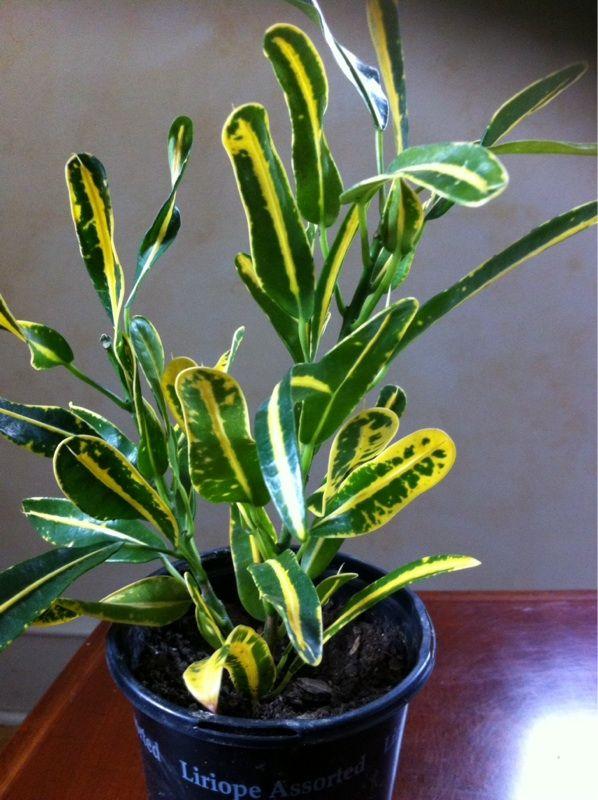
FAQs About Growing Narrow Leaf Croton
1. How to maintain narrow leaf croton?
Watering Keep the soil consistently moist, but not waterlogged. Water when the top inch of soil feels dry to the touch. Avoid letting the soil dry out completely or sitting in water for extended periods. Light Provide bright, indirect light for optimal growth. Place the plant near a window where it can receive plenty of sunlight, but avoid direct sunlight, which can scorch the leaves. Temperature and Humidity Maintain moderate room temperatures between 60-85°F (15-29°C). Crotons prefer high humidity, so consider using a humidifier or placing the plant on a pebble tray filled with water to increase moisture levels. Fertilizing Feed the plant with a balanced, water-soluble fertilizer every 4-6 weeks during the growing season (spring and summer). Reduce feeding frequency or stop altogether during the dormant season (fall and winter). Pruning Trim back leggy or overgrown branches to maintain a compact shape and encourage bushier growth. Use clean, sharp pruning shears to make clean cuts just above a leaf node.
2. What are the uses of narrow leaf croton ?
Narrow leaf croton (Codiaeum variegatum 'Punctatum') has several uses:Ornamental Plant It is primarily grown for its attractive foliage, which features colorful, narrow leaves in shades of green, yellow, orange, and red. Landscaping Narrow leaf crot ons are commonly used in landscaping to add color and texture to gardens, borders, and tropical-themed landscapes. Indoor Plant They can be grown indoors as houseplants, adding a touch of tropical flair to interior spaces. Hedging In warmer climates, narrow leaf crotons can be used as hedging plants to create natural barriers or privacy screens. Container Plant They thrive in pots and containers, making them suitable for patios, balconies, and other outdoor living spaces. Medicinal Uses In traditional medicine, certain parts of the plant are believed to have medicinal properties, although it's important to consult a healthcare professional before using it for medicinal purposes.
3. Can I grow narrow leaf croton indoor?
Yes, narrow leaf crotons can be grown indoors, but they require bright, indirect light and consistent watering. Ensure the soil is well-draining, and keep the plant away from drafts or extreme temperature fluctuations. Regular pruning can help maintain its shape and encourage bushiness.
4. Which pot is best for growing narrow leaf croton?
For growing narrow leaf croton, it's best to choose a pot that provides good drainage and is slightly larger than the plant's current root system to allow for growth. A terracotta pot or a plastic pot with drainage holes at the bottom would work well. Ensure the pot is deep enough to accommodate the root system comfortably.
5. From where can I shop for narrow leaf croton?
You can shop for narrow leaf croton plants at local nurseries, garden centers, or botanical gardens. Additionally, you can also find them at online plant stores and marketplaces like Etsy, Amazon, or specialized plant websites. Make sure to check availability and shipping options based on your location.
